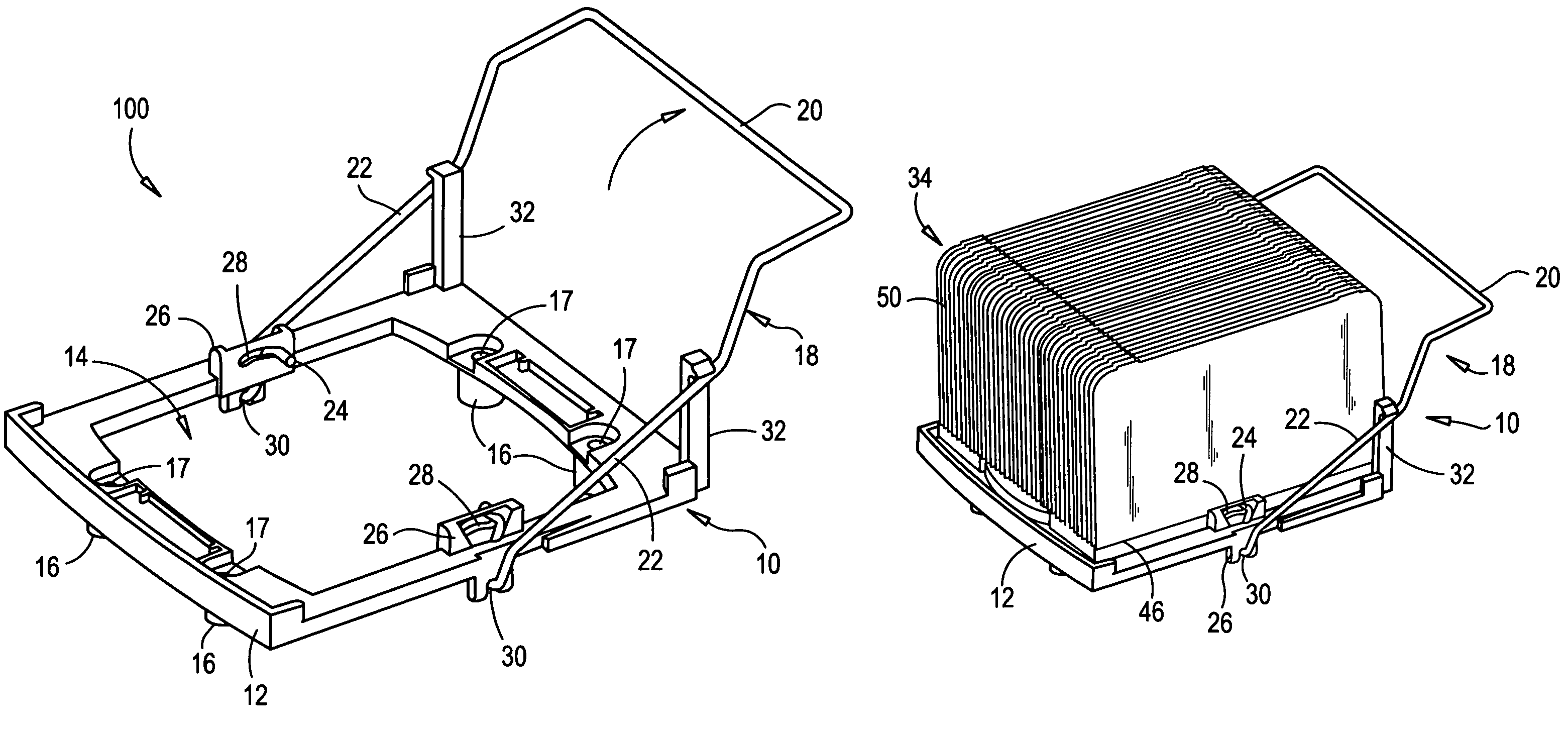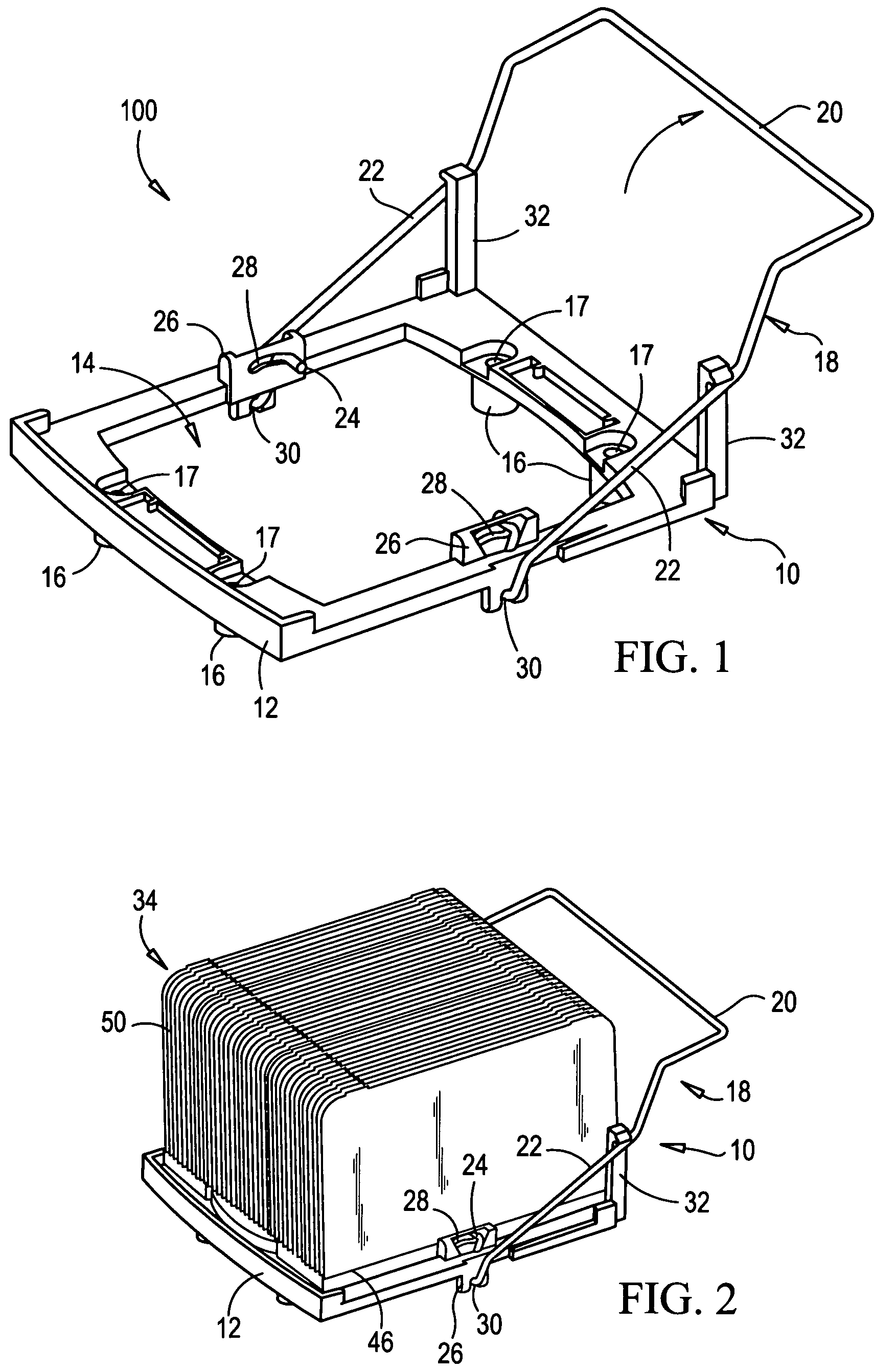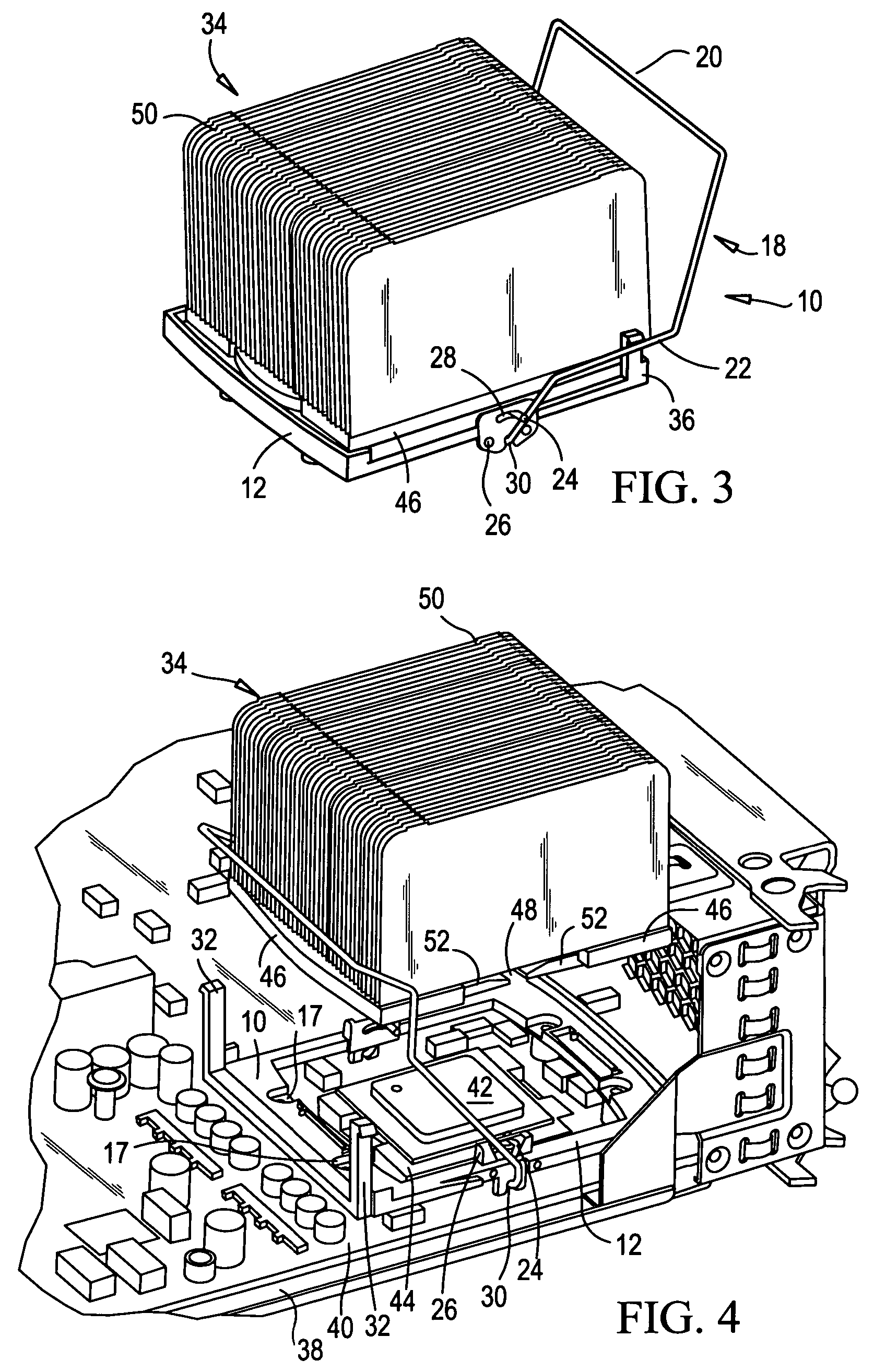Torsion spring force and vertical shear pin retention of heat sink to CPU
a technology of heat sink and heat source, which is applied in the direction of snap fasteners, electrical apparatus construction details, buckles, etc., can solve the problems of reducing the thermal resistance between the heat sink and the heat source, severe damage to the electrical components of the computer, and occupying critical space within the confines of the computer chassis
- Summary
- Abstract
- Description
- Claims
- Application Information
AI Technical Summary
Benefits of technology
Problems solved by technology
Method used
Image
Examples
Embodiment Construction
[0021]The present invention advantageously provides a method and apparatus for mounting a heat sink above an electrical component in a computer, such as a CPU, such that the heat sink is in thermal contact with the CPU but the weight of the heat sink is absorbed by the computer chassis or CPU mounting plate and not the CPU. When used with Land Grid Array (LGA) CPU technology, the present invention advantageously provides an apparatus that secures the heat sink to the motherboard or CPU of the computer and prevents unwanted separation between the heat sink and the CPU which might occur due to the solder connection between the CPU and its socket.
[0022]Referring now to the drawing figures in which like reference designators refer to like elements there is shown in FIG. 1 an apparatus constructed in accordance with the principles of the present invention and designated generally as “100”. Apparatus 100 includes a retention module assembly 10, which is adapted for placement on top of a m...
PUM
 Login to View More
Login to View More Abstract
Description
Claims
Application Information
 Login to View More
Login to View More - R&D
- Intellectual Property
- Life Sciences
- Materials
- Tech Scout
- Unparalleled Data Quality
- Higher Quality Content
- 60% Fewer Hallucinations
Browse by: Latest US Patents, China's latest patents, Technical Efficacy Thesaurus, Application Domain, Technology Topic, Popular Technical Reports.
© 2025 PatSnap. All rights reserved.Legal|Privacy policy|Modern Slavery Act Transparency Statement|Sitemap|About US| Contact US: help@patsnap.com



